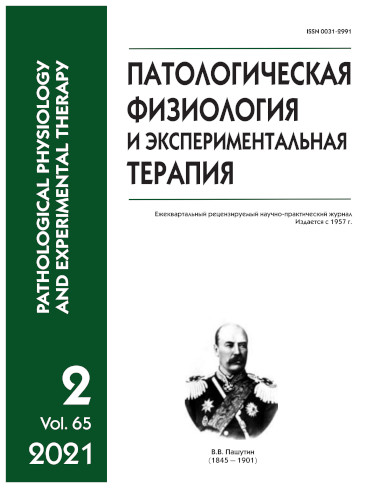Comparing the effects of surgical treatment and chemotherapy on the thymus structure in experimental breast cancer
Abstract
Aim. To identify structural changes in the thymus of female Wistar rats during surgical treatment of breast cancer or with chemotherapy. Methods. Breast cancer (BC) was induced by subcutaneous injection of N-methyl-N-nitrosourea into the second right breast 5 times at 7 day intervals. Resection of BC was performed 6 mos after BC induction, or chemotherapy was administered according to the CMF scheme. Histological examination of the thymus and breast tumor was performed according to a standard method. Morphometric study of sections and counting cell elements in the tumor and in structural and functional areas of the thymus were performed by point counting. Results. In untreated BC, structural signs of accidental thymus involution were evident. There was an increase in the area of connective tissue elements and of glandular epithelial tumors. After surgical treatment of BC, accidental thymus involution was less pronounced than after chemotherapy. Also after surgical treatment, as in the case of untreated BC, the thymus cortical substance remained decreased. Compared with untreated BC, the area of glandular epithelial tumors in the thymus decreased, and the density of cellular elements in the cortical substance increased. In the structural zones of the thymus, the number of macrophages increased, and the number of cells with pyknotic nuclei decreased. After chemotherapy, in comparison with surgical treatment, structural signs of involution of the thymus were evident. In the thymus, the area of connective tissue elements was reduced, and the number of mitotically dividing cells in the subcapsular zone of the cortical substance was reduced. In all the zones of the thymus, the number of cells with pyknotic nuclei increased, and the number of macrophages decreased. Conclusion. After surgical treatment of BC, accidental thymus involution was less pronounced than in the untreated group. After chemotherapy, compared with surgical treatment of BC, morphological changes in the thymus may indicate a decrease in the activity of the lymphoid and epithelial components and an increase in the number of dying cells.






